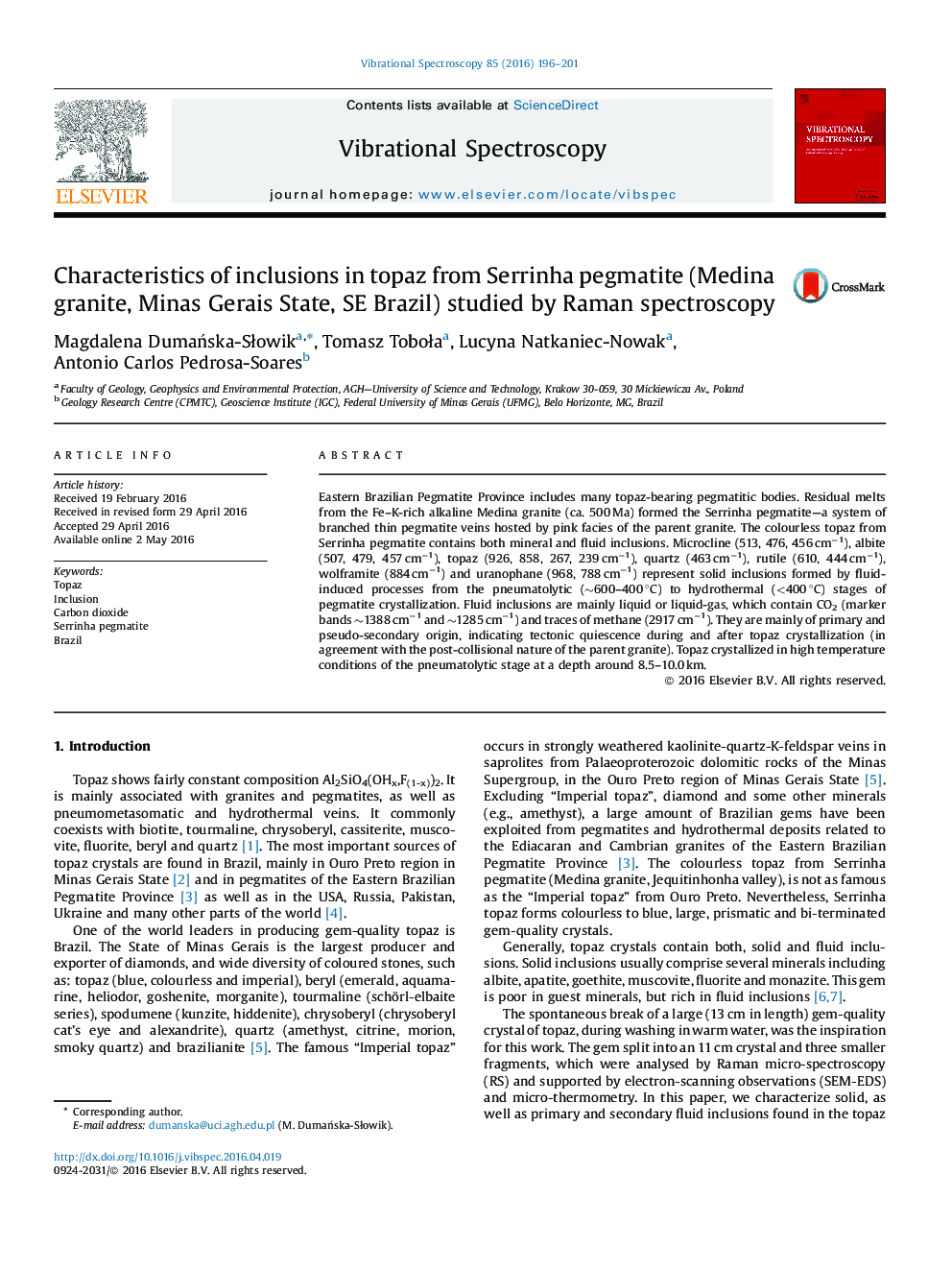| Article ID | Journal | Published Year | Pages | File Type |
|---|---|---|---|---|
| 1249571 | Vibrational Spectroscopy | 2016 | 6 Pages |
•Topaz from Serrinha pegmatites contains solid and fluid inclusions.•Solid inclusions represent major and minor components of host rock.•Fluid inclusions are filled with CO2 and subordinately CH4.•Topaz crystallized at a depth around 8.5–10.0 km.
Eastern Brazilian Pegmatite Province includes many topaz-bearing pegmatitic bodies. Residual melts from the Fe–K-rich alkaline Medina granite (ca. 500 Ma) formed the Serrinha pegmatite—a system of branched thin pegmatite veins hosted by pink facies of the parent granite. The colourless topaz from Serrinha pegmatite contains both mineral and fluid inclusions. Microcline (513, 476, 456 cm−1), albite (507, 479, 457 cm−1), topaz (926, 858, 267, 239 cm−1), quartz (463 cm−1), rutile (610, 444 cm−1), wolframite (884 cm−1) and uranophane (968, 788 cm−1) represent solid inclusions formed by fluid-induced processes from the pneumatolytic (∼600–400 °C) to hydrothermal (<400 °C) stages of pegmatite crystallization. Fluid inclusions are mainly liquid or liquid-gas, which contain CO2 (marker bands ∼1388 cm−1 and ∼1285 cm−1) and traces of methane (2917 cm−1). They are mainly of primary and pseudo-secondary origin, indicating tectonic quiescence during and after topaz crystallization (in agreement with the post-collisional nature of the parent granite). Topaz crystallized in high temperature conditions of the pneumatolytic stage at a depth around 8.5–10.0 km.
